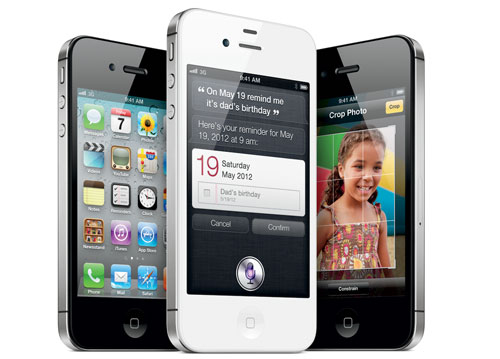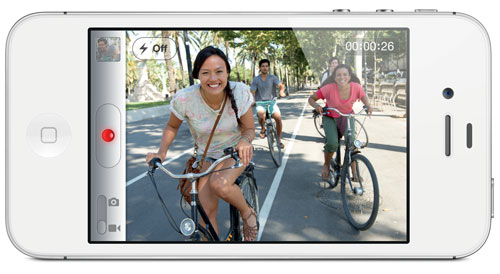
“Siri, what’s the best smartphone?”
“The one you’re holding.”
“Again, Siri, what is the best smartphone?”
“I think you’ve already answered that question.”
One more time, Siri. “You’re kidding, right?”
There’s no doubt that Siri, the voice-driven “digital assistant” built into the iPhone 4S is the coolest feature of Apple’s new top-of-the-line smartphone. And, oftentimes, the most infuriating.
It offers up great ripostes to questions like, “Who made you?” The answer: “Like it says on the box, I was designed by Apple in California.” Or, “Where are you?” “That’s classified.” Our favourite, in response to asking Siri to tell us a joke: “Two iPhones walk into a bar … I forget the rest.”
Siri has kept us endlessly amused since the 4S arrived in TechCentral’s offices last week. Of course, it’s not meant (primarily) for asking it inane questions but as a tool to make it easier to manage your phone. Does it work? Yes and no.
Setting alarms and appointments works like a charm. Tell Siri to set an alarm for 9pm and it does it without error. Tell it to call someone and it gets it right, most of the time. On the downside, you can’t get it to open apps for you. And using it to dictate text messages or e-mails is a hit and miss affair, possibly because it doesn’t cater for SA accents.

We tried the UK, Australian and US versions and eventually settled on the UK accent as most accurate for our accents, though, as one wit put it, Siri’s simulated UK voice bears an uncanny resemblance to Anthony Hopkins in Silence of the Lambs.
In one big respect, though, Siri is broken in that users outside the US can’t use it to look for local businesses and addresses. Telling it to find the nearest pizzeria returns the message: “Sorry, I can only look for businesses in the US, and when you’re using US English.” We hope Apple is working furiously to bring that functionality to more markets.
Be warned, too, that Siri is demanding on data as it uploads your voice to Apple’s servers for analysis. If you use it regularly, make sure you’re connected to Wi-Fi or have a big data bundle from your cellular provider.
But enough about Siri. Is the iPhone 4S worth the upgrade?
Certainly, this is the fastest iPhone that Apple has made so far, packing in the dual-core A5 processor (the same one that’s inside the iPad 2, though running at a slightly slower clock speed), a power graphics processing unit and all the sensors and wireless connection options you’d expect, including 3G downloads of up to 14,4Mbit/s.
There’s also a new, 8-megapixel camera that takes superb shots, even of scenes with complicated lighting, and shoots video at 1080p resolution at 30 frames per second.
The camera is one of the best we’ve seen in a smartphone, if not the very best, and features high dynamic range technology (overlaying multiple exposures of the same scene), face detection, geo-tagging and touch-focus. We’d go as far as to suggest it matches the quality of top-of-the-line compact cameras.
Our only gripe is that the camera is a little too close to the edge of the device, so more often than not we got a finger in the way of the lens. It’s not a deal-breaker, but Apple should move the camera a little further in when it launches the iPhone 5.
The phone itself feels solid, though slightly heavy for its size at 140g (a few grams heavier than its predecessor). The weight is far from unmanageable, though, and the device retains the beautiful design of the 4. It looks fantastic sitting on a coffee table, especially the white version which we think looks just that bit more stylish that the black one.
Good news is the antenna problems that plagued the iPhone 4 have been resolved. Call quality is excellent, network permitting, with good timbre and a best-in-class speakerphone. The “retina” display, with the same 960×640-pixel resolution as on the iPhone 4, remains excellent and is readable in direct sunlight.
The 3,5-inch screen does seem a little skimpy, though, especially for users who have become accustomed to the Android-powered monsters from companies like HTC and Samsung. It’s still very usable, and the high pixel density makes up for the iPhone’s relatively diminutive size, but we think the iPhone 5 is going to have to have a bigger screen to keep Apple competitive in the long term. We think the range between 4 inches and 4,3 inches has become the new sweet spot for smartphones.

Battery life seems to be better than on predecessors. Admittedly it’s a little slow now in the run-up to Christmas, so our phones aren’t ringing as much as they normally do, but we are pleasantly surprised that the battery easily manages a full day, even with lots of fiddling around in the App Store and trying our best to get Siri to say outrageous things.
There are a few other gripes, chief among them being that the Maps application doesn’t support turn-by-turn navigation, a now-standard feature on Android devices. Talk is it’s coming soon. We’ve come to rely heavily on this feature on other devices so it can’t get here soon enough as far as we are concerned. Of course, users who need voice-guided navigation can fork out for TomTom’s excellent, but far from free, Southern Africa navigation app (US$50 in the App Store).
So, is it worth the upgrade if you already have an iPhone 4? The answer is probably not, unless you are a fanboy and simply must have the latest and greatest from Apple. If you’re using the 3GS or an earlier model, and are not tempted by the sweets on offer in the Android shop, then an upgrade is definitely worthwhile.
“Siri, should I buy a new iPhone?”
“Consider your alternatives.”
It said that. Siriously. — Duncan McLeod, TechCentral
- The iPhone 4S starts at R7 699 for the 16GB model. It’s available from MTN and Vodacom on contract options
- Subscribe to our free daily newsletter
- Follow us on Twitter or on Google+ or on Facebook
- Visit our sister website, SportsCentral (still in beta)




